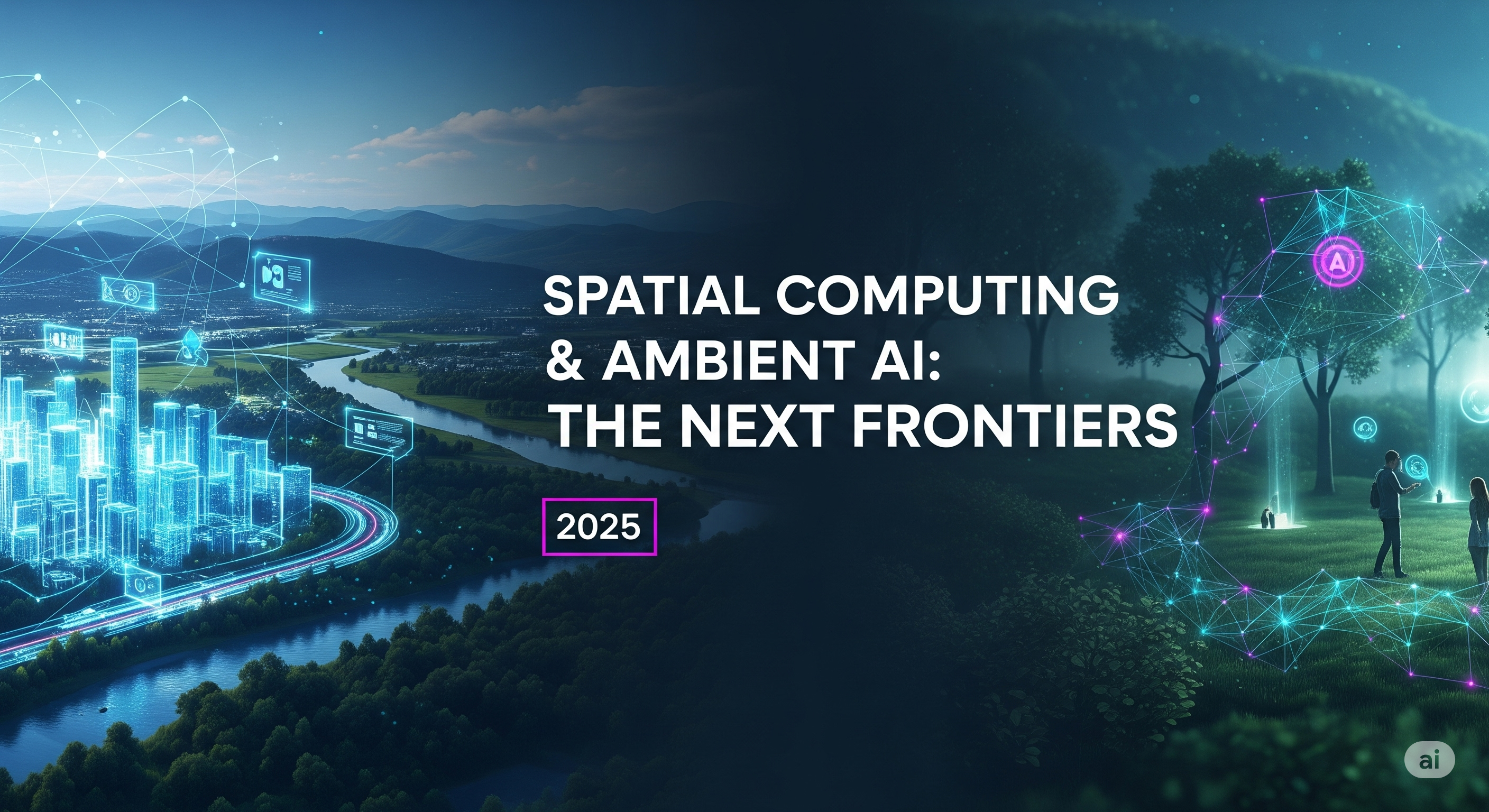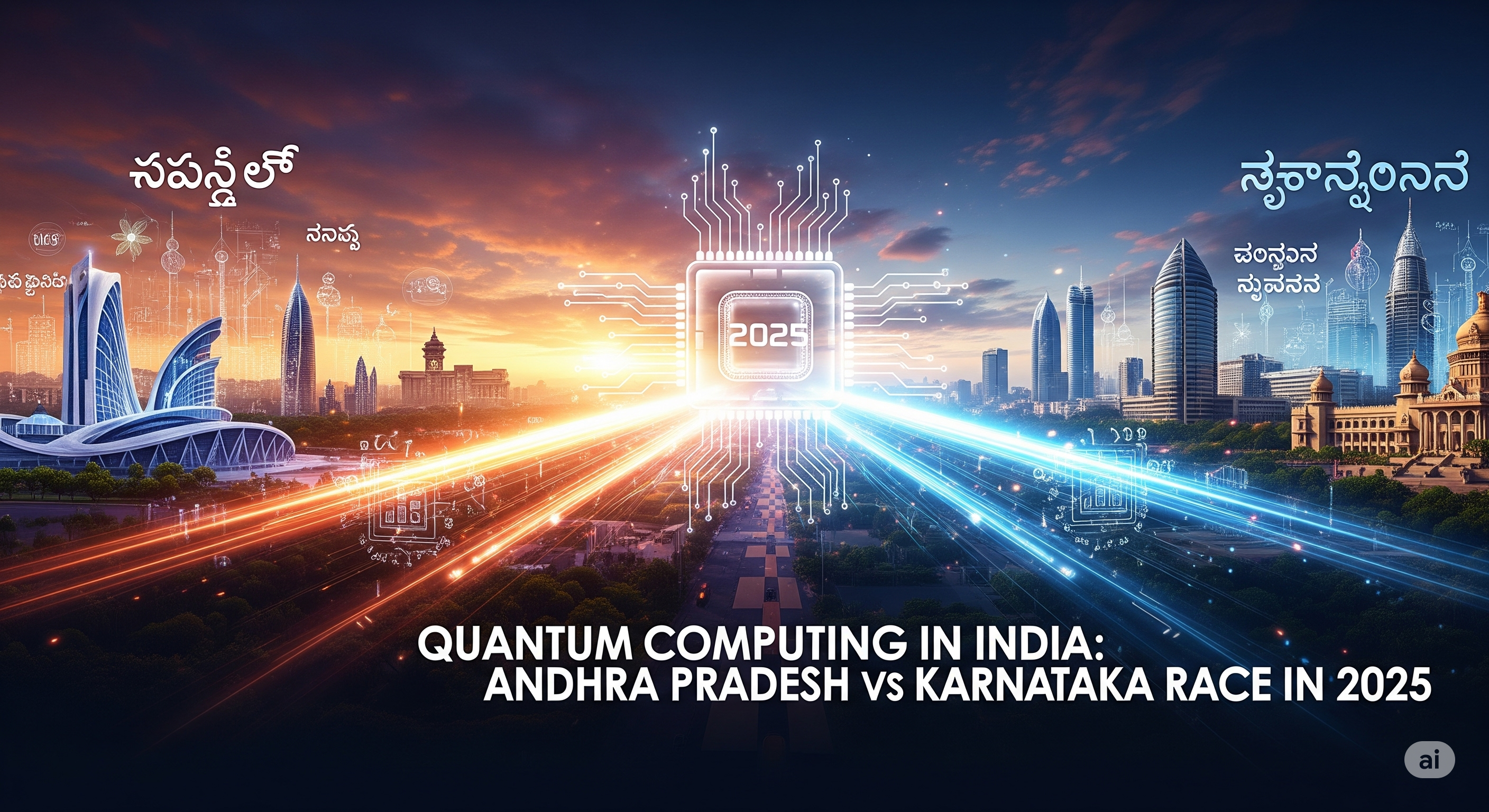
Spatial Computing & Ambient AI: The Next Frontiers in 2025
Introduction: The Rise of Invisible Intelligence
In 2025, the shift from device-centric experiences to intelligent environments is accelerating. The two most significant developments—Spatial Computing and Ambient AI—are turning physical spaces into interactive, predictive zones of intelligence.
Gartner lists Spatial Computing and Ambient Invisible Intelligence among the top strategic technology trends for 2025 :contentReference[oaicite:1]{index=1}.
What Is Spatial Computing?
Spatial Computing merges AR/VR, real-time sensor data, mapping, and AI to create digital overlays tied to the physical world. It’s about seeing UX tied to locational context—whether through glasses, IoT devices, or built-in sensors.
Example: a warehouse using spatial maps to guide robots and workers in real time, optimizing routes and collision avoidance.
What Is Ambient AI?
Ambient AI refers to systems that sense context—voice, motion, intent—and automatically act without explicit triggers. It’s the evolution of ‘wake-word’ assistants into proactive agents.
Picture an office where the lighting adjusts as you enter a meeting room, audio systems lower volume during conversation, and contextual data displays automatically appear on glass panels.
Why These Trends Are Exploding in 2025
- Advances in AI models for computer vision and audio
- Affordable edge sensors and 5‑6G infrastructure
- Demand for zero-touch experiences post-pandemic
- Tech convergence: AR wearables + smart environments
McKinsey and Gartner rank these as transformative in both consumer and enterprise tech stacks :contentReference[oaicite:2]{index=2}.
Innovation Use Cases
- Smart retail spaces analyzing footfall and digital signage flows
- Factory floors with AR overlays for workers and predictive maintenance
- Smart homes that anticipate occupant needs—lighting, temp, reminders
- Hospital systems that display patient data contextually to staff
Comparison Table
| Feature | Spatial Computing | Ambient AI |
|---|---|---|
| Interaction Mode | Visual‑sensor overlay | Voice/sensor-driven actions |
| User Control | Reactive (users initiate) | Proactive |
| Infrastructure | AR devices + mapping | IoT + edge AI nodes |
| Privacy Risk | Moderate (stored maps) | Higher (continuous listening) |
Challenges Ahead
- Complexity in system integration and calibration
- User privacy and data governance
- High deployment costs for sensors and AR devices
- Limited developer talent for spatial-AI design
India’s Role and Opportunities
With initiatives like Rajasthan’s new AI Policy that include data centre and innovation infrastructure funding, India is well-positioned to lead experiments in ambient intelligence in public spaces :contentReference[oaicite:3]{index=3}.
Quantum Valley in Andhra Pradesh is also investing in advanced R&D, which can feed into future spatial-AI use cases in logistics, healthcare, and arc mapping :contentReference[oaicite:4]{index=4}.
How Brands and Startups Can Capitalize
Pilot these technologies through retail stores, campuses, or smart offices. Look for cross-disciplinary partners—hardware manufacturers, AI platforms, spatial UX experts.
Invest early in device‑agnostic platforms that can scale across AR wearables, voice assistants, edge IoT devices, and cloud orchestration.
Future Outlook: 2025 Onwards
We’re entering an era where technology fades into the background—spaces know us, react to us, and support us quietly. Spatial Computing and Ambient AI will redefine workflows, smart cities, retail, and everyday life by 2027.
✨ Final Thoughts
Spatial computing and ambient AI are not sci‑fi—they are deliberate steps toward intelligent, responsive environments. For innovators, this is the most fertile frontier of this decade.
